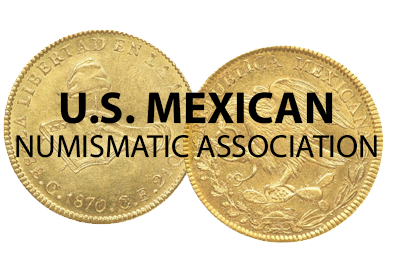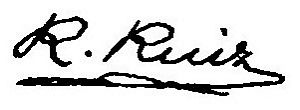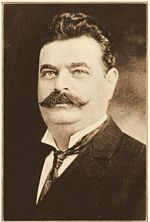Personnel of El Banco de Sonora
The signatories over the years were, as interventors José Pesqueira, Alejandro Ainslie, Pedro Monteverde and Fidel Pujol; as manager (Gerente) Max Müller and Ludwig Brauer; and as president (Presidente) Rafael Ruíz, Juan de Dios Castro and Adolpho Bley.
Interventor
|
José J. Pesqueira, a cousin of governor Ignacio Pesqueira, had almost been a fully-fledged governor at one point during Sonora’s turbulent pastIn 1875 with Sonorans loudly protesting Ignacio Pesqueira's running for yet another term, he wisely chose his cousin, José, to run for governor. The campaign was noted for its bitterness, especially in the press. José Pesqueira won, but only after the votes of Altar, Alamos,and Arizpe were nullified by Pesqueira's puppets in the state legislature. Charging that the election was fraudulent, Francisco Serna Salazar, a customs collector at the port of Libertad, pronounced the Plan of Altar, listing Pesqueira's abuses, and led a revolt. He asked President Sebastian Lerdo de Tejada to void the Sonoran elections and appoint an interim governor until new elections would be held. In mid-August the towns of Altar, San Ignacio, and Santa Ana seconded Serna, as did the Yaquis and the Mayos, but when the rebels moved to put the plan into effect, they were defeated at Altar on 23 August. Serna fled to Arizona, where he bought arms and organized an army, and on 8 November crossed into Sonora. The entire state was soon engulfed in civil war. Ignacio Pesqueira was forced to leave his estate at Las Delicias and join the fight. Entire populations aided and abetted the rebels. José and Ignacio Pesqueira countered with a very vigorous campaign, and by the end of the year, the rebel number had dwindled to less than six hundred. With the state paralized Yaqui and Mayo Indians, led by the famous Cajeme, took advantage of the chaos and swept the Sonoran garrisons out of their valleys, and compromised the effectiveness of the state militia. The operations by Ignacio Pesqueira were noted for their intensity: he was so severe in the city of Hermosillo, that many residents fled to Guaymas where federal authorities gave them aid and comfort. In the Alamos district, the rebels, led by Lorenzo Torres, defied the state troops. In the beginning Pesqueira signed the notes by hand but on 18 March 1898 he wrote to Limantour that he wanted to take advantage of the ability to sign $5 and $10 notes in facsimile and asked him to arrange for the Oficina del Timbre to make a plateCEHM, Colección José Y. Limantour, carpeta 40, legajo 10563. |
 |
| Alejandro D. Ainslie became interventor in September 1902 (his signature is on $20 and $50 notes dated 1 July 1902 but these must have been issued later) and gave up the post in November 1904. Probably a solicitor, he served as attorney general (Ministro Fiscal) of Sonora and editor of La Constitución, the official bulletin of the state. He left Sonora to take up a federal post in Mexico City, and in 1914 became the Huertista government’s consul in TucsonThe Oasis, 29 August 1914. |  |
| Pedro Monteverde took over as interventor in January 1905 (though his signature appears on notes dated 1 July 1903 and 15 November 1904) and held the office until August 1911. Born on 18 October 1834, he was a lawyer, magistrate, and judge who served as local Deputy and Secretario de Gobierno. He died in Los Angeles on 29 April 1915. | 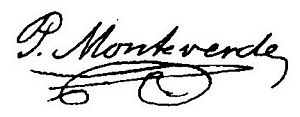 |
|
Fidel S. Pujol was a lawyer, public notary and judge from Guaymas. Pujol was also involved in journalism from an early age. He was apparently the son of a Spanish typesetter and in 1872 worked in the Imprenta de la Viuda de Pujol e Hijos and edited a satirical magazine called El Zancudo. He also edited La Baja California, El Orden, La Linea Recta and El Criterio Público. He was apoderado for the Guaymas branch of the Banco Nacional de México. He was interventor from September 1911 but all the notes that he signed had the printed date of 2 January 1911. |
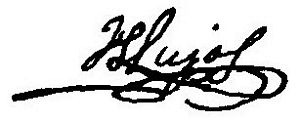 |
Gerente
|
Max Müller was born in Lübeck, Germany, in 1865 and got his early training in banking in his home country. He became manager of the El Paso National Bank in Paso del Norte in October 1889, and after five years started a private banking firm there under the name Farrell & Müller. In 1897 the owners sold out their business and Müller became the first manager of the Banco de Sonora. He held the post from the bank’s inauguration until (?) September 1908, when he took over as president. In 1912 and 1913 he appears as vice-president. Müller was also German consul in Hermosillo and president of the Espiritu Mexican Mining Company. |
 |
|
Ludwig Brauer was also of German birth and received his early training and connection with banking in Germany. He was manager from September 1908 until at least November 1912 and was president until June 1913 when he handed over to Adolpho Bley. Brauer was involved in various enterprises with members of the Sonoran elite. He founded the Compañía Explotadora de Tierras y Maderas de Sonora in 1912AGNES, Miguel A. López, N. P. Hermosillo, tomo 11, exp. 1081, f. 136-145. This company included James Thomson Tighe Paxton, Max Müller, Hugo Sherer (Jr), and Guillermo Leonard. The same year in Huatabampo he joined Espiridión Otero and José Tiburcio Otero to form E. Otero y Compañía to construct a quay, railway and warehouses in the port of TobabiAGNES, Miguel A. López, Hermosillo, tomo 5, exp. 1356/ f.29-37. In 1922 he was involved in a mining company, the Compañía Minera del Occidente, with Adolfo Bley, Luis A. Martínez, Víctor Aguilar and Lauro B. Quiróz. Other companies were Aguilar y Compañía, whose members were Brauer, Bley, Martínez and Aguilar and the Compañía Ganadera Realizadora, to acquire and dispose of cattle. |
 |
Presidente
Other personnel
Other people connected with the bank included the following. In all enough of them (Ainslie, Bley, Müller, and many of the employees) were Germans for the bank to be considered German-ownedOsco Castañeda Dahes, La Revolución Mexicana, Mexico, 1989.
Victor Aguilar: He was elected comisario at the first shareholders' meeting in November 1897Dos Republicas, California, 6 November 1897 and was a director in [ ]
Henry Bartning: He was manager of the Nogales branch for several years, then moved to the Alamos and finally the Culiacán branchThe Oasis, 21 March 1914.
Ricardo Cubillas: He was the bank’s assistant auditor in [ ].
Juan C. Dorbecker: He covered as interventor in July 1900.
Felix Epler Farrell: He was born in Jacksonville, Illinois on 28 October 1868. After a spell at the First National Bank of Jacksonville he went to Ciudad Juárez, where, in 1893, he established the private banking firm of Farrell & Müller. In December 1897 the owners sold their interests to the Banco Minero and Farrell moved to Hermosillo, where he assisted in the establishment of the Banco de Sonora. In the spring of 1898 he disposed of his interests and returned to Jacksonville to become Assistant Cashier of the First National.
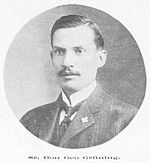 George Grünig: Born in Darmstadt, Germany, in 1869 he came to Sonora in 1896 and established the brewery Cervecería de Sonora. He married Dolores Monteverde, the daughter of Pedro Monteverdeinformation courtesy of Nicholas Juliano. Pedro Monteverde married Juliana Uruchurtu and had two daughters, Amelia and Dolores. Dolores (born 1 January 1874, died San Francisco 27 October 1914) married George Grünig. He was on the board of directors by February 1908.
George Grünig: Born in Darmstadt, Germany, in 1869 he came to Sonora in 1896 and established the brewery Cervecería de Sonora. He married Dolores Monteverde, the daughter of Pedro Monteverdeinformation courtesy of Nicholas Juliano. Pedro Monteverde married Juliana Uruchurtu and had two daughters, Amelia and Dolores. Dolores (born 1 January 1874, died San Francisco 27 October 1914) married George Grünig. He was on the board of directors by February 1908.
John (Juan) Ashton Heap: Heap, who also served as the British consul in Guaymas, was the manager at Guaymas from [ ] until early 1912 when he resigned in order to devote more time to other business affairsTucson Daily Citizen, 24 July 1912. Photograph courtesy of Alexander Heap. By June 1914 Heap was vice president of the Blochman Commercial and Savings bank of San Diego, and travelling in Sonora on behalf of the bankTucson Daily Citizen, 3 June 1914. The Blochman bank specialized in handling Mexican exchange, and did business with both Huerta (in June 1914 transferring 100,000 pesos from Mexico City to Federal troops at Ensenada) and the Constitutionalists..
J. M. Hernández: He signed the bank’s balance sheets as acting accountant (contador) in May 1908 and acting cashier (cajero) in August and September 1910 and as contador in October 1910.
Jorge Le Brun: He was the bank’s auditor in [ ].
Manual I. Loaiza: elected alternate director (Suplente) at the first shareholders' meeting in November 1897Dos Republicas, California, 6 November 1897.
F. Lopez del Castillo: He was a director in [ ]
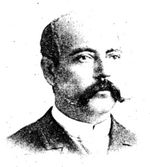 Alberto Mascareñas Navarro: The son of Manuel Macareñas, he was born in Guaymas in 1876. He began his banking career with the Banco de Sonora as subgerente in its Chihuahua branch and then managed its Nogales branch. He was cashier of the Banco Hipotecario y Agrícola del Pacífico at Hermosillo, and then in 1913 set himself up in business in NogalesThe Oasis, 15 February 1913. He entered the diplomatic corps in 1918 as Mexican Consul General in San Francisco, then moved to Havana, London and Liverpool, ending up as Consul General in New York. In December 1924 he was recalled to Mexico by President Calles to be Subsecretario de Hacienda, under Finance Minister Alberto J. Pani. As manager of the Comisión Monetaria, he was active in the founding of the Banco de México on 1 September 1925, and served as its first managing director. After leaving the bank in 1938 he was a minister plenipotentiary in London, and died in Mexico City in 1944.
Alberto Mascareñas Navarro: The son of Manuel Macareñas, he was born in Guaymas in 1876. He began his banking career with the Banco de Sonora as subgerente in its Chihuahua branch and then managed its Nogales branch. He was cashier of the Banco Hipotecario y Agrícola del Pacífico at Hermosillo, and then in 1913 set himself up in business in NogalesThe Oasis, 15 February 1913. He entered the diplomatic corps in 1918 as Mexican Consul General in San Francisco, then moved to Havana, London and Liverpool, ending up as Consul General in New York. In December 1924 he was recalled to Mexico by President Calles to be Subsecretario de Hacienda, under Finance Minister Alberto J. Pani. As manager of the Comisión Monetaria, he was active in the founding of the Banco de México on 1 September 1925, and served as its first managing director. After leaving the bank in 1938 he was a minister plenipotentiary in London, and died in Mexico City in 1944.
Luis A. Martínez: He was vice-president in 1913, when the bank’s directors were based in Los Angeles.
Alfredo May: He was a director in [ ].
Rudolf E. H. Petersen: He was born in Lübeck, Germany on 9 March 1889 and was married to Eva Grünig, the daughter of George Grünig. He occasionally acted as contador in 1911 and 1912 and was manager of the Hermosillo branch in 1913. In June 1917 he was clerk for the Sonora Bank & Trust Company in Nogales, Arizona and interned as an alien enemyinformation courtesy of Nicholas Juliano. George Grünig married Dolores Monteverde, the daughter of Pedro Monteverde, and had three children, Eva, Amelia and George. Eva married Petersen.
Lauro Quiróz: He was the bank’s assistant auditor in [ ].
Carlos Rivera: He was manager of the Nogales branch in 1912Polk's Arizona Pictorial Gazetteer And Business Directory, 1912 and continued as manager and cashier of the Sonora Bank & Trust CompanyTucson Daily Citizen, 23 May 1914.
Harry J. Smith: Formerly of El Paso, he was contador in 1900 until at least 1912 and represented the bank’s interests in Hermosillo in 1915.
Alejandro F. Tarín: He was cajero in 1900 till at least September 1913.
Gustavo Torres: elected alternate director (Suplente) at the first shareholders' meeting in November 1897Dos Republicas, California, 6 November 1897.
W. C. Winegar: in February 1902 Winegar was teller for the newly established Banco de CananeaTucson Daily Citizen, 28 February 1902 and by 1904 was working for the First National Bank of Douglas, in charge of their Mexican interestBisbee Daily Review, 2 September 1904. He became manager of the Chihuahua branch on 17 August 1906El Correo de Sonora, 17 August 1906. In October 1913 Silvestre Terrazas recommended Winegar to Villa, mentioning that he was almost the only banker in the city who had supported their cause and saying that he might need protection if the others tried to take revenge when they saw they had lostST papers, Part I, box 83, 19 October 1913. At the outbreak of the revolution Winegar moved to El Paso, worked as manager of the Sonora Bank & Trust Company, and then took up residence in Los Angeles. In April 1935 he was manager of the Banco Nacional in Ciudad Juárez.
